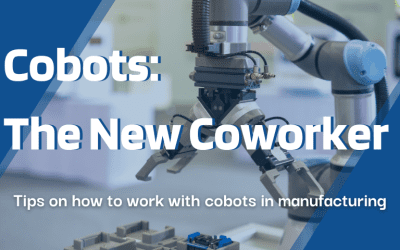Some jobs are more dangerous than others, and workplace accidents occur. According to the National Safety Council, accidental injuries are the {{cta(‘e5b92894-6b13-4a9f-b29a-0695aac94149’)}} in the US.
However, the {{cta(‘7ec0529d-d7df-4bfa-883f-4e92c61df634’)}} a Department of Labor agency, regulates the safety and health conditions in most private industries. This means OSHA sets industry standards and approves safety plans and programs, including PPE programs and training requirements.
Accidents happen; we get that. However, no job or product is worth your life. Our No. 1 priority out on the floor is making sure that you leave in one piece.
There are so many simple ways you can make sure that you don’t get hurt and go home safely every day. Below are five tips to help make sure you’re safe at work.
1. Don’t mess with equipment until you’ve been trained on it.
Driving the forklift or riding the pallet jack, as you see above, may seem like a lot of fun, but it can be dangerous when not operated properly.
The Occupational Safety Health Administration, better known as OSHA, requires all forklift drivers to be certified before operating a forklift, and you must re-certify every 3 years. If you aren’t forklift certified, ask if your company has a training program that could help you obtain your certification and move up. Certified Forklift Operators earn {{cta(‘c7482923-766a-4baf-a293-3476c7ca181b’)}}, with some areas of the country making even more!
Even machines that don’t require certificates or licenses can be hazardous if you haven’t been properly trained to use them yet. You could easily put your hand in the wrong place and get hurt. Wait to be trained before touching any equipment! We promise you will get plenty of chances to work with the machines afterward.
2. Be especially careful around the aisles.
The aisles are the “streets” of the warehouse. This is where the forklifts drive and heavy machinery is typically moving. It is important to pay attention to any signs, lights, floor markings, or any other visual indicator, and always look both ways before crossing the aisle.
3. Keep your area clean.
Unclean areas can lead to safety hazards like slips and falls. They could even prevent people from being able to safely get out of an area in an emergency like a fire.
Some tips to maintain a clean space include:
- If you see any debris on the floor, clean it up and dispose of it properly.
- Empty your trashcan before it’s full. An overflowing trashcan may cause trash to fall to the floor and result in someone slipping and falling.
- Don’t stack boxes in aisles or in front of exits. These areas must be kept clear so everyone can move around or exit the building safely.
4. Know your safety procedures and emergency protocols.
On your first day, your onsite team should train you in all of your facility’s safety procedures and emergency protocols. Remembering your rendezvous points, hazard communication, fire safety procedures, and other safety procedures will help you react faster which could save lives.
Also, be aware of where your emergency exits and first aid kits are located. Some teams even have members who are certified in CPR or First Aid. It is important to know their names and locations as well. Remembering these can save you so much time when every moment counts. If your leadership doesn’t provide you with this information, or if you forget, ask. They will be happy to remind you.
If you see someone breaking protocol or acting in an unsafe manner, report it immediately to your manager. A warehouse or plant floor is no place to horse around.
5. Wear your personal protective equipment at all times.
Wearing your personal protective equipment, also known as PPE, is one of the easiest ways to keep yourself safe.
Every warehouse and manufacturing location are different. The type of products that are made, the raw materials that are used, and the machines that are running impact what PPE is required. The most common ones are steel toe boots, hard hats, gloves, high visibility vests, and safety glasses. Most places make you bring your own steel toe boots, but then they’ll provide additional equipment.
Each piece of PPE helps protect you in its own unique way. Safety glasses keep debris from flying into your eyes, while steel toe boots can keep you from losing any toes if something were to fall or run over your foot. Remember what we said about aisles and watching out for forklifts? Your high visibility vest helps the forklift operators see you when they’re driving.
Please remember to always wear your PPE. The last thing that anyone wants to do is to call your loved one to tell them that you’re in the hospital because you cut your finger off during work due to your failure to wear the proper cutting gloves.
Understand that this is not the end all be all list of safety tips for working in an industrial setting. There are safety procedures and rules in place at every warehouse and plant that are specific to that location, industry, and business. Your supervisors should go through all of the safety hazards, rules, and procedures with you during onboarding, your first day of work, or your first day of training. These are just some of the most common safety tips that will help you make it safely through your time in manufacturing world.
Now that you know some of our top safety tips, are you ready to consider a career in manufacturing? It really is a great industry to get into. These jobs will always be needed, and there is so much room for advancement! If you’re looking for information, here are a few more blogs about {{cta(‘09702ed6-bca5-4960-81fb-feaccfb8d8ca’)}} and why you really should {{cta(’64bd23ed-4d80-433a-8bc2-419160081fae’)}}
{{cta(‘6ccb8974-e1a7-493e-a4c1-3637907afbb3’)}}{{cta(‘98914834-2432-45ac-92e2-0e88bdb84e40’)}}

.png)


-400x250.png)